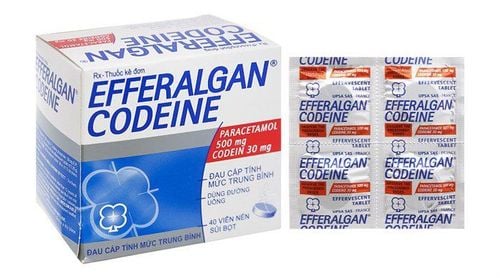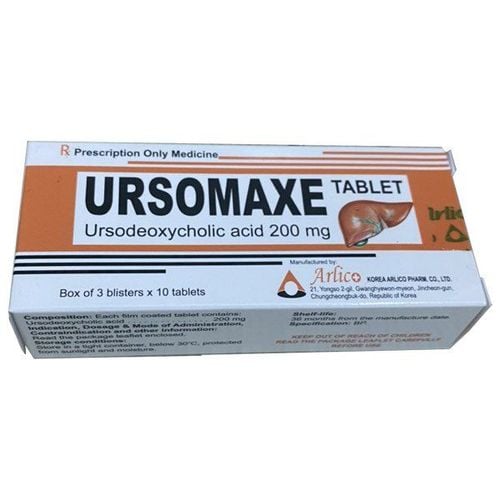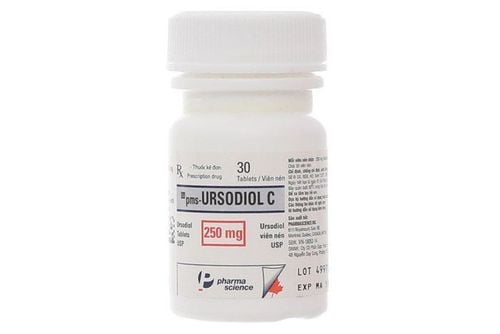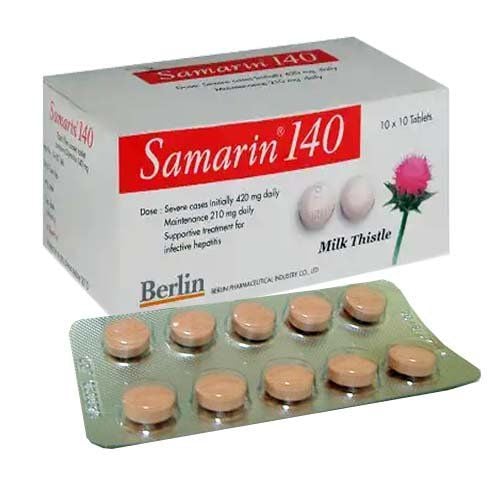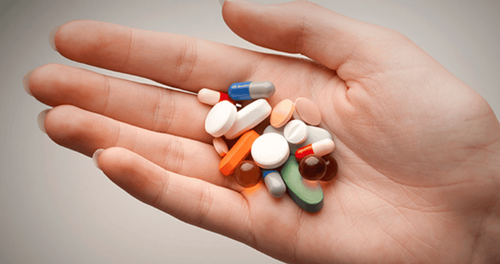This is an automatically translated article.
Burci contains the active ingredient Ursodeoxycholic acid 150mg. The drug is indicated in the treatment of gallstones, cholecystitis, inflammation of the biliary tract, improving liver function in chronic hepatitis.1. What is Burci drug?
Ursodeoxycholic acid is a secondary bile acid produced by intestinal bacteria, while primary bile acids are produced by the liver and accumulated in the gallbladder. Ursodeoxycholic acid is one of the most commonly used gallstone treatments today. The action of the drug is a combination of many different mechanisms: Reduces cholesterol reabsorption, increases the conversion of cholesterol in the liver into bile acids by increasing the activity of the cholesterol enzyme 7 alpha-hydroxyase in the liver. In addition, ursodeoxycholic acid also helps maintain cholesterol in a soluble form in bile.2. What does Burci do?
Burci is indicated in the following cases:
Improve liver function in patients with chronic hepatitis. Protect and restore liver cells before or after drinking alcohol. Patients with dyspepsia, anorexia due to disorders in the biliary tract. Supports the treatment of cholesterol gallstones, cholecystitis and biliary tract inflammation
3. Dosage and usage of Burci
Dosage: The dose of Burci drug may vary depending on the condition and severity of the disease. The following is a reference dose of Burci in some cases:
Treatment of cholesterol gallstones: The recommended dose is from 5 to 10mg/kg/day, the average dose is 7.5mg/kg/day in people with good physical condition. medium. For obese people, the recommended dose is 10mg/kg/day, depending on body weight, it can be used from 2-3 tablets/day. Treatment of chronic hepatobiliary disease: The usual dose is from 13-15mg/kg/day. Patients should start at a dose of 200 mg/day, then gradually increase the dose to achieve the optimal dose at about 4 to 8 weeks of treatment. Treatment of acquired hepatobiliary disease due to viscous mucus disease: The optimal dose of Burci is 20mg/kg/day. How to use: Patients can take Burci once in the evening or divided into two times morning and evening. Treatment time is usually 6 months, however, if the stone is larger than 1cm, the treatment time can be extended up to 1 year.
4. Contraindications
Burci is contraindicated in the following cases:
Patients with hypersensitivity to the active ingredients or excipients of the drug. The patient has a bile duct obstruction. Women who are pregnant or suspected of being pregnant. Patients with rapidly progressive hepatitis. The patient has calcium stones. Patients with acute cholecystitis, impaired contractility of the gallbladder or inoperable gallbladder. Children under 12 years old. The patient has an acute peptic ulcer. Patients with ileostomy
5. What are the side effects of Burci?
Burci may cause side effects such as allergies, leukopenia, diarrhea, gastritis, urinary tract infections, upper abdominal pain, nausea and vomiting. Patients receiving Burci may experience increased pruritus and urticaria at the start of treatment for severe cholestasis. Therefore, the recommended starting dose of Burci in these patients is 200 mg/day.6. What are the precautions when using Burci?
For patients on long-term treatment, although ursodeoxycholic acid has no carcinogenic effects, rectal monitoring is still recommended. In the case of using Burci for the treatment of cholesterol gallstones, the therapeutic effect should be checked by imaging after 6 months. When treating chronic hepatobiliary disease, patients with cirrhosis combined with impaired hepatocellular function or cholestasis (blood bilirubin level greater than 200 micromol/L) must be carefully monitored while taking the drug. In patients with cholestasis causing rash, the dose of ursodeoxycholic acid should be increased gradually with an initial dose of 200 mg/day. In this case, co-administration of cholestyramine is necessary provided that cholestyramine is administered approximately 5 hours apart from Burci. If the patient develops diarrhea while taking the drug, the dose must be reduced and in the case of persistent diarrhea, Burci should be discontinued. Patients using Burci should measure SGPT (ALT), SGOT (AST), GGT, ALP and bilirubin at the time before and after treatment to be able to give the most appropriate treatment regimen. Pregnancy: Animal studies have shown teratogenic potential. Therefore, Burci should not be used in women who are pregnant or planning to become pregnant. Lactation: Burci should not be used by women who are breast-feeding
7. Drug interactions
Drug interactions that will change the therapeutic effect and/or increase the toxicity of the drug. The following are patient interactions to note when using Burci:
Do not use Burci at the same time as cholestyramine because the drug's effect will be reduced by binding to cholestyramine and being eliminated. If cholestyramine is needed, it should be taken 5 hours before taking Burci. Patients should not use with estrogen hormone drugs because these drugs increase bile cholesterol. Avoid using Burci with other bile acid-binding drugs such as antacids, activated charcoal because it can reduce the therapeutic effect. The article has provided information about the uses, dosage and notes when using Burci drug. If you need more information or have any questions about your medication, you should contact your doctor or pharmacist.





